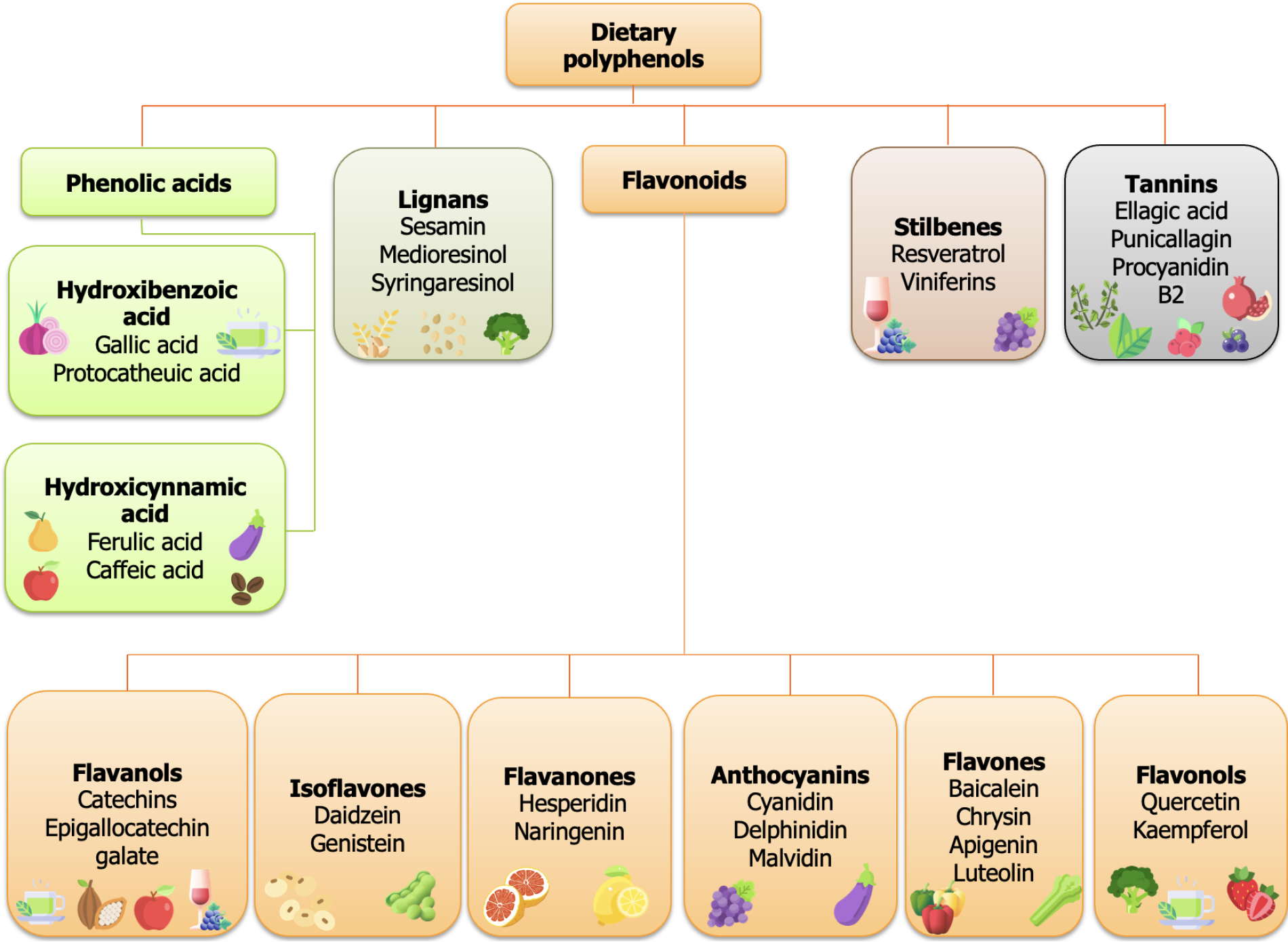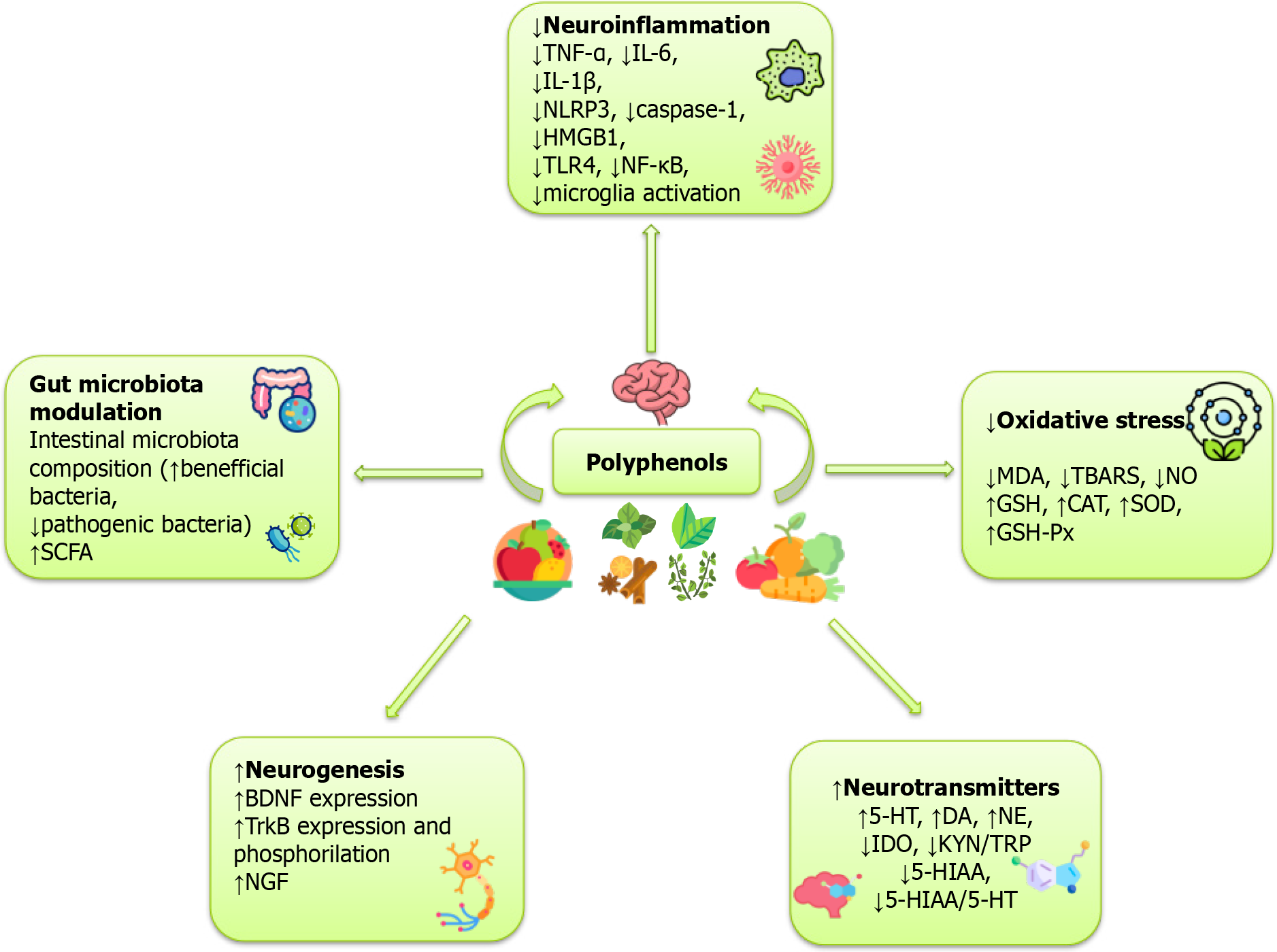Copyright
©The Author(s) 2025.
World J Psychiatry. Sep 19, 2025; 15(9): 107828
Published online Sep 19, 2025. doi: 10.5498/wjp.v15.i9.107828
Published online Sep 19, 2025. doi: 10.5498/wjp.v15.i9.107828
Figure 1 Dietary polyphenol classification and main representatives.
Figure 2 Main mechanisms implicated in the antidepressant-like effects of dietary polyphenols in pre-clinical animal studies.
The potential of phenolic compounds in reducing depressive behaviors can be exerted by regulating factors related to neuroinflammation, oxidative stress, monoaminergic neurotransmission, neurogenesis, and by modulation of the intestinal microbiota. TNF-α: Tumor necrosis factor-alpha; IL-6: Interleukin-6; IL-1β: Interleukin-1beta; NLRP3: Nucleotide-binding oligomerization domain-, leucine-rich repeat- and pyrin domain-containing protein 3; HMGB1: High mobility group box 1 protein; TLR4: Toll-like receptor 4; NF-κB: Nuclear factor kappa B; SCFA: Short-chain fatty acids; BDNF: Brain-derived neurotrophic factor; NGF: Nerve growth factor; MDA: Malondialdehyde; TBARS: Thiobarbituric acid reactive substances; NO: Nitric oxide; GSH: Glutathione; CAT: Catalase; SOD: Superoxide dismutase; GSH-Px: Gluthatione peroxidase; 5-HT: 5-hydroxytryptamine; DA: Dopamine; NE: Norepinephrine; IDO: Indoleamine 2,3-dioxygenase; KYN: Kynurenine; TRP: Tryptophan; 5-HIAA: 5-hydroxyindoleacetic acid.
- Citation: Mijailović NR, Milojević-Rakić M, Mihajlović K. Polyphenols: A top-down approach to nutrition and depression. World J Psychiatry 2025; 15(9): 107828
- URL: https://www.wjgnet.com/2220-3206/full/v15/i9/107828.htm
- DOI: https://dx.doi.org/10.5498/wjp.v15.i9.107828














